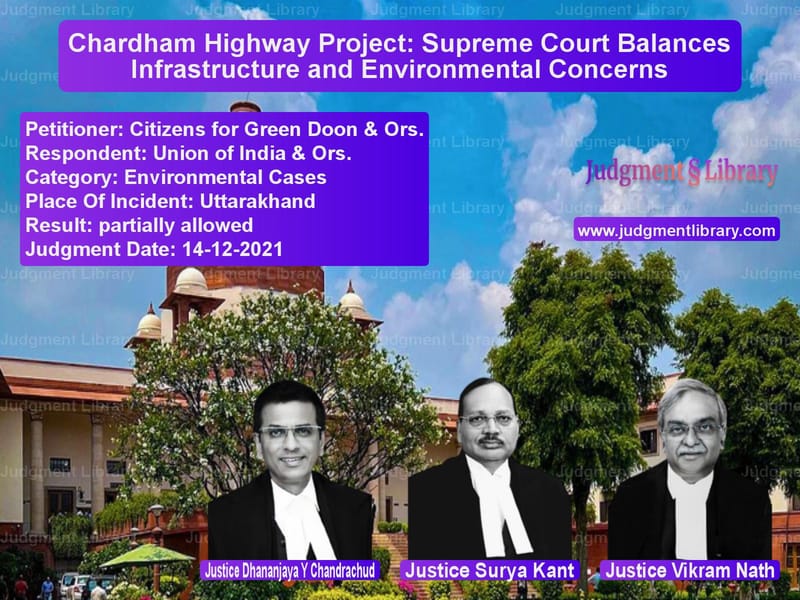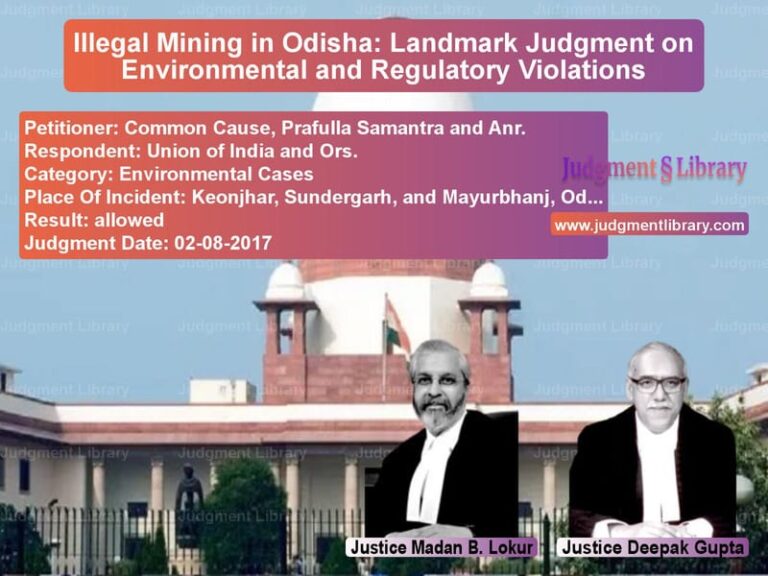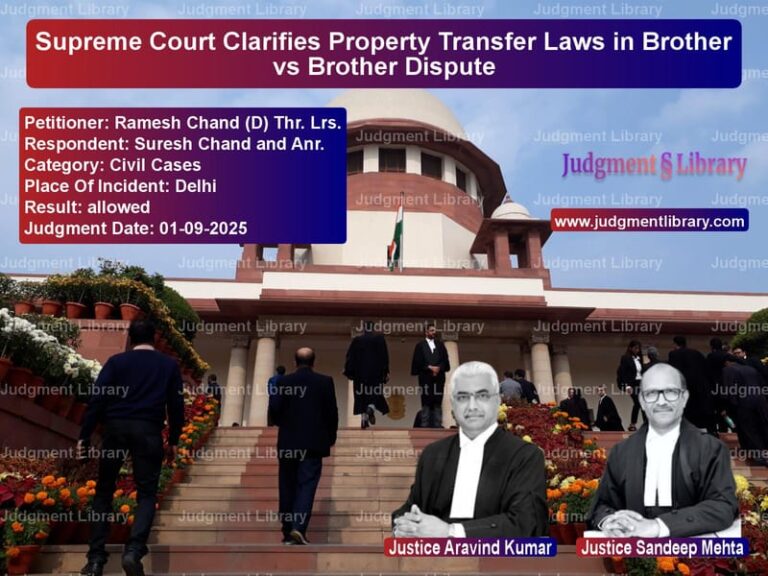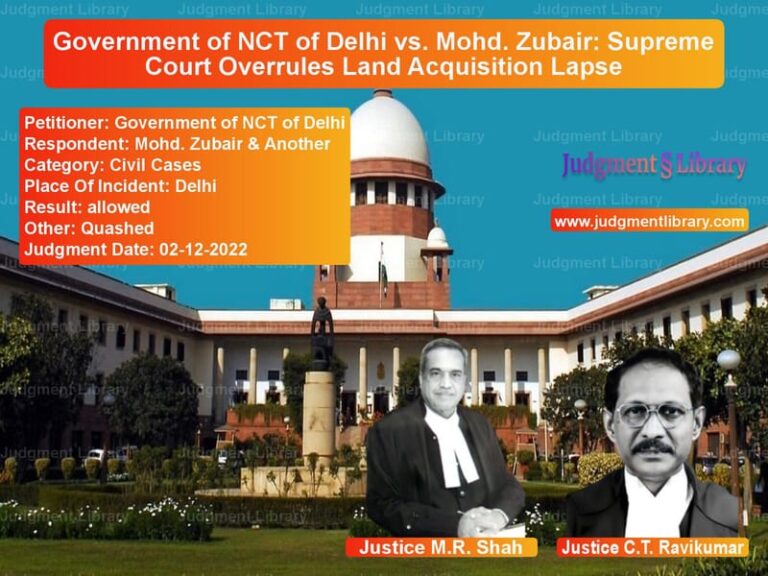Chardham Highway Project: Supreme Court Balances Infrastructure and Environmental Concerns
The Chardham Mahamarg Vikas Pariyojna, also known as the Chardham Highway Project, has been at the center of a significant legal battle concerning environmental conservation and national security. The Supreme Court’s decision in Citizens for Green Doon & Ors. vs. Union of India & Ors. sheds light on the complex balance between infrastructure development and ecological preservation. This case revolves around the widening of roads leading to the Chardham shrines in Uttarakhand and its impact on the fragile Himalayan ecosystem.
Background of the Case
The Chardham Highway Project was initiated in 2016 to improve road connectivity to four major pilgrimage sites—Yamunotri, Gangotri, Kedarnath, and Badrinath. The project sought to widen existing highways to ensure smoother vehicular movement, enhance pilgrimage access, and support military logistics along the Indo-China border.
Spanning approximately 900 kilometers, the project entailed widening roads to 10 meters, constructing tunnels, bridges, and bypasses, and stabilizing slopes to prevent landslides. However, the project soon faced legal challenges due to concerns over deforestation, improper muck disposal, and the destruction of ecologically sensitive areas.
Proceedings Before the National Green Tribunal
Several environmental groups challenged the project before the National Green Tribunal (NGT) in 2018. They argued that:
- The project was being executed in violation of the Forest (Conservation) Act, 1980, and the Environment (Protection) Act, 1986.
- The large-scale cutting of trees and excavation of hillsides would lead to soil erosion and landslides.
- The improper disposal of debris (muck) was already causing damage to rivers and valleys.
- The project failed to obtain an Environmental Impact Assessment (EIA) despite its extensive nature.
The NGT ruled that the project did not require environmental clearance under the EIA Notification, 2006. However, it established an Oversight Committee to monitor environmental safeguards.
Supreme Court’s Intervention
Following the NGT’s decision, the petitioners approached the Supreme Court, arguing that the tribunal had overlooked critical environmental concerns. Recognizing the need for a comprehensive review, the Supreme Court constituted a High Powered Committee (HPC) in 2019, chaired by environmentalist Prof. Ravi Chopra.
Key Judicial Observations
The HPC conducted multiple field studies and submitted detailed reports highlighting the following concerns:
- Massive deforestation leading to increased landslide incidents.
- Construction debris being dumped into rivers, affecting aquatic life.
- Non-compliance with slope stabilization techniques.
- Threats to wildlife habitats due to excessive human intervention.
However, the committee remained divided on the width of the roads. While the majority recommended restricting the width to 5.5 meters (Intermediate Lane Configuration), the minority, led by representatives from the Ministry of Defence (MoD), advocated for a wider 10-meter Double-Lane Paved Shoulder (DL-PS) configuration, citing national security reasons.
Government’s Position on Road Widening
The MoD emphasized that:
- The roads leading to the Indo-China border were crucial for troop mobility.
- Restricting road width would hinder military logistics and emergency evacuation.
- India’s security situation along the border necessitated the construction of robust and reliable infrastructure.
Supreme Court’s Judgment
After reviewing the HPC reports and considering submissions from both environmentalists and the government, the Supreme Court delivered its final verdict:
- It permitted the expansion of three strategic roads—Rishikesh to Gangotri, Rishikesh to Mana, and Tanakpur to Pithoragarh—as per the DL-PS configuration to accommodate military movement.
- It rejected the contention that the entire highway should be widened to 10 meters.
- It mandated the adoption of advanced slope stabilization techniques to prevent landslides.
- It formed an Oversight Committee chaired by former Supreme Court judge Justice A.K. Sikri to ensure environmental compliance.
Environmental Safeguards and Monitoring
The Court directed that:
- Deforestation should be minimized, and compensatory afforestation must be undertaken in identified areas.
- Muck disposal should be scientifically managed to prevent river pollution.
- Wildlife corridors must be maintained to reduce human-animal conflict.
- The project should implement bioengineering solutions to protect fragile mountain slopes.
Key Takeaways from the Judgment
- Balancing Infrastructure and Environment: The Court acknowledged the need for improved connectivity while emphasizing ecological preservation.
- National Security Considerations: Strategic roads were given priority, allowing wider road construction in border areas.
- Judicial Oversight: The establishment of an Oversight Committee ensures continuous monitoring of environmental safeguards.
- Future of Infrastructure Development: The ruling sets a precedent for sustainable development in ecologically sensitive zones.
- Scientific Approach to Road Construction: The use of advanced slope stabilization and debris management techniques was mandated.
Final Verdict
The Supreme Court’s decision partially allowed the appeal, permitting road expansion in strategic areas while enforcing environmental safeguards. The ruling ensures that infrastructure development aligns with sustainability goals, setting a balanced precedent for future projects.
Conclusion
This landmark judgment reinforces the judiciary’s role in balancing national interests with environmental protection. The Chardham Highway Project, while essential for pilgrimage and national security, must adhere to stringent environmental norms to preserve the Himalayan ecosystem for future generations.
Petitioner Name: Citizens for Green Doon & Ors..Respondent Name: Union of India & Ors..Judgment By: Justice Dhananjaya Y Chandrachud, Justice Surya Kant, Justice Vikram Nath.Place Of Incident: Uttarakhand.Judgment Date: 14-12-2021.
Don’t miss out on the full details! Download the complete judgment in PDF format below and gain valuable insights instantly!
Download Judgment: citizens-for-green-d-vs-union-of-india-&-ors-supreme-court-of-india-judgment-dated-14-12-2021.pdf
Directly Download Judgment: Directly download this Judgment
See all petitions in Environmental Cases
See all petitions in Public Interest Litigation
See all petitions in Constitution Interpretation
See all petitions in Fundamental Rights
See all petitions in Separation of Powers
See all petitions in Judgment by Dhananjaya Y Chandrachud
See all petitions in Judgment by Surya Kant
See all petitions in Judgment by Vikram Nath
See all petitions in partially allowed
See all petitions in supreme court of India judgments December 2021
See all petitions in 2021 judgments
See all posts in Environmental Cases Category
See all allowed petitions in Environmental Cases Category
See all Dismissed petitions in Environmental Cases Category
See all partially allowed petitions in Environmental Cases Category







